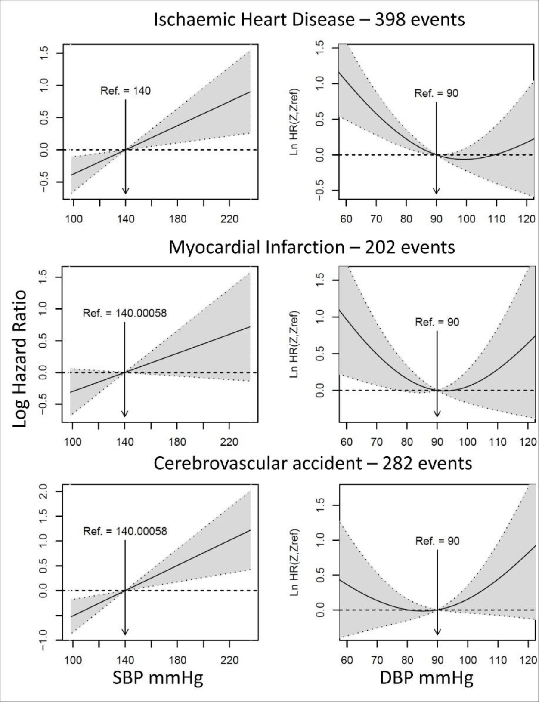| 193P London, UK Pharmacology 2017 |
Pharmacological blood pressure reduction over 5 years shows evidence for diastolic J-curve on cardiovascular outcomes
Introduction: Current guidelines recommend a BP target <140/90 mmHg irrespective of cardiovascular(CV) risk level. The SPRINT trial showed significant benefit of intensively pharmacologically treating SBP to <120 mmHg. Concerns exist regarding the potential increased CV risk from intensive DBP lowering - the diastolic J-curve. We analysed the relationship between longitudinal on-treatment SBP and DBP on CV events.
Methods: Longitudinal BP was obtained from clinic records for hypertensive patients attending the Glasgow BP Clinic. AUC BP for the first year(Y1) and 2-5years(Y2-5) were calculated for patients who had at least 3 BP measurements during these periods. Survival analyses were performed using Cox proportional hazard model adjusted for age, sex, cholesterol, smoking status, BP(time-dependent) and Charlson comorbidity index(time-dependent).
Results: There were 4813 eligible patients (mean age 54±14 years; female 52%). The average baseline, Y1 and Y2-5 BPs were 167/97±26/12, 153/91±19/9 and 146/87±16/8 mmHg respectively. There were 398, 452 and 455 first admissions with IHD in 15, 25, 35 years (31,563, 39,255 and 40,714 person-years respectively). Survival analyses for 15-year follow-up period showed a linear relationship between SBP over the first 5 years with IHD, MI, HF and CVA while DBP demonstrated a non-linear J-shaped relationship with IHD and MI events but not for CVA (Figure). Similar results were observed for 25- and 35-year follow-up periods.

Conclusions: Low DBP (<90mmHg) is associated with increased risk of IHD but not CVA. Increasing SBP was linearly associated with increased risk of IHD and CVA. Intensive pharmacologic SBP reduction measures should recognise potential risks of concomitant DBP reduction.

